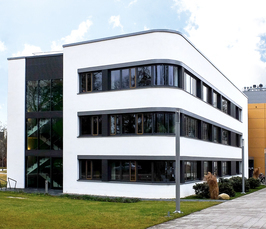Time- and angle-resolved photoelectron spectroscopy (trARPES) is a very powerful technique to investigate the transient electronic band structure and the fundamental scattering processes in solid state materials, combining the direct momentum- and energy-resolved view on the electronic structure provided by ARPES with the additional dimension of femtosecond time resolution. This also opens up a new horizon compared to conventional ARPES, namely the spectroscopy of formerly unoccupied states above the chemical potential, which can be transiently populated and subsequently studied. Challenges posed by the necessary extreme ultraviolet (XUV) photon energy to cover the whole Brillouin zone (BZ) in electron momenta have been tackled by new laser developments, allowing for operation at high repetition rates and providing the necessary high sensitivity to such unoccupied states throughout the BZ [1,2]. Combining such advanced laser sources with the recently developed time-of-flight based momentum microscopes, which promise a huge improvement in parallel detection efficiency and allow for the simultaneous detection of multiple BZ without the need to rearrange the sample geometry [3] seems like an ideal match.Recently, we upgraded our OPCPA-driven high-repetition rate XUV setup at the FHI, which now combines both a hemispherical analyzer and a time-of-flight momentum microscope (SPECS Metis 1000) in the same experimental chamber. In my talk, I will present the various possibilities enabled by the new instrumentation, like movies of the whole transient Fermi surface, observation of anisotropic scattering dynamics, analysis of dichroism in the momentum distribution and more. In addition, I will quantify the advantages and limitations of both hemispherical analyzer and momentum microscope for certain use cases in the field of trARPES and discuss the advantage of combining both types of instruments within a single experimental apparatus. [1] M. Puppin,
et al., Opt. Express 23, 1491 (2015)[2] M. Puppin,
et al., Rev. Sci. Instrum. 90, 023104 (2019).[3] G. Schönhense,
et al., J. Electron Spectrosc. Relat. Phenom. 200, 94–118 (2015).
[more]

